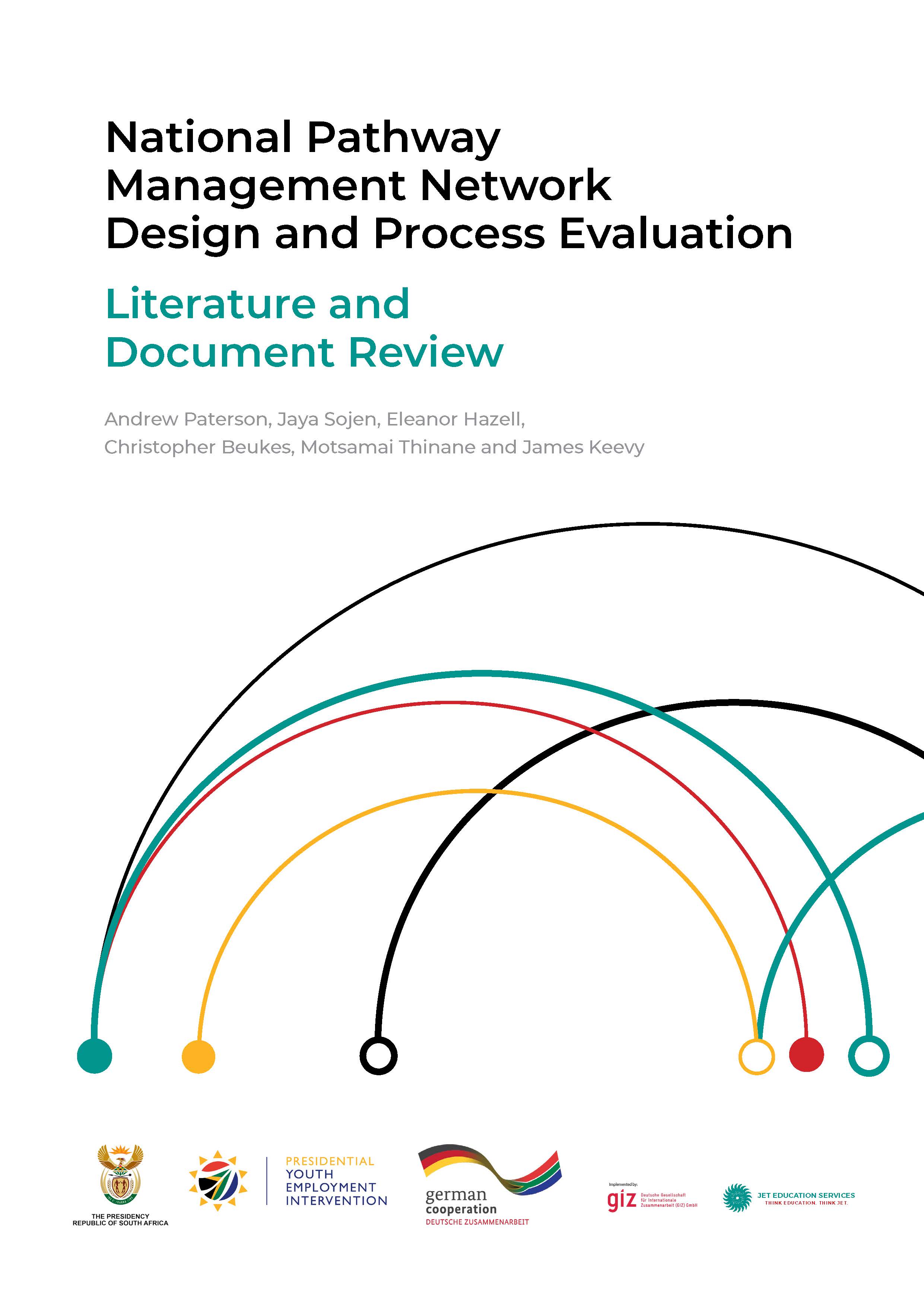New Publication: National Pathway Management Network Design and Process Evaluation Literature and Document Review
Authored by Andrew Paterson, Jaya Sojen, Eleanor Hazell, Christopher Beukes, Motsamai Thinane and James Keevy.
Conducted as part of a commissioned evaluation of the design and implementation of the National Pathway Management Network (NPMN), this literature and document review is presented here as a stand-alone report. The review, which situates and contextualises the design and early implementation of the NPMN, focuses on the underlying concepts that informed the NPMN’s design in responding to and addressing identified challenges. The review offers analysis and insights into aspects that may influence the quality standards, progress and outcomes of the NPMN and provides a picture of the conditions that underscore the importance of a coordinated effort to enable young people to access relevant employment and learning opportunities. A perspective on the structures, relationships and processes involved in mobilising and sustaining the programme within the broader national policies and frameworks aimed at supporting young people is also presented.
High unemployment in South Africa is a persistent challenge rooted in historical inequalities and structural economic features. Despite post-apartheid initiatives, the flagging labour market has not kept pace with the growing population of young people. This situation is aggravated by lethargic economic growth and a formal sector unable to accommodate the population of unemployed young people, which, since 2021, comprises half of all youth in the 15-24 age group (Statista, 2025). In the same period, over 30% of this age group are either unemployed or not in education or training (NEET), making them extremely vulnerable (Department of Higher Education and Training [DHET], 2024). Gender and spatial dimensions further marginalise females and rural young people, adding to their limited access to education, training and employment opportunities. Provinces exhibit different levels of disparity in unemployment rates, while financial constraints differ between communities, hindering some from opting to migrate to areas with better job prospects. Moreover, young people’s pathways to meaningful work and sustainable livelihoods in South Africa can involve precarious transitions between education, employment and informal work.
Read the NPMN Literature and Document Review here

